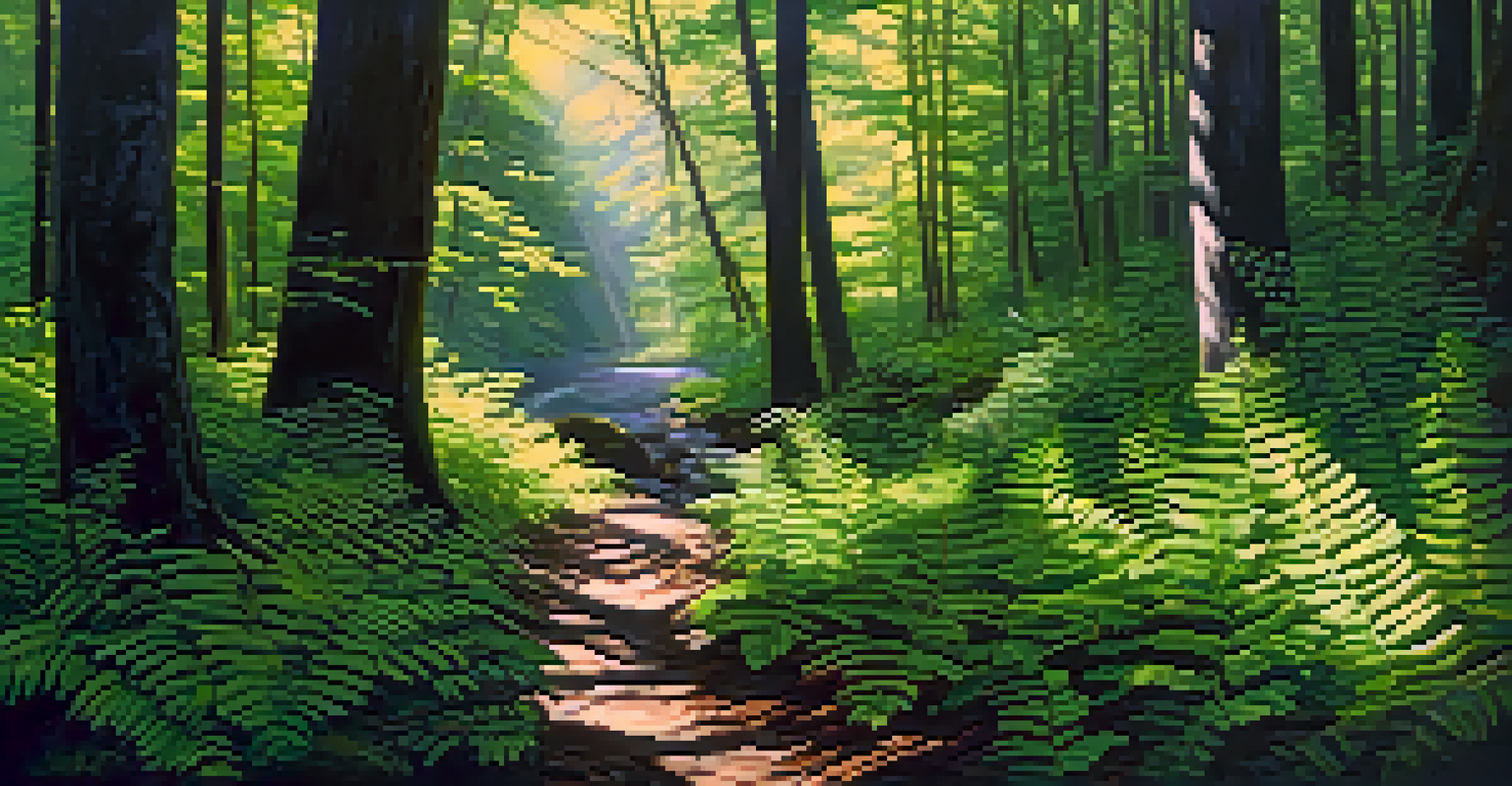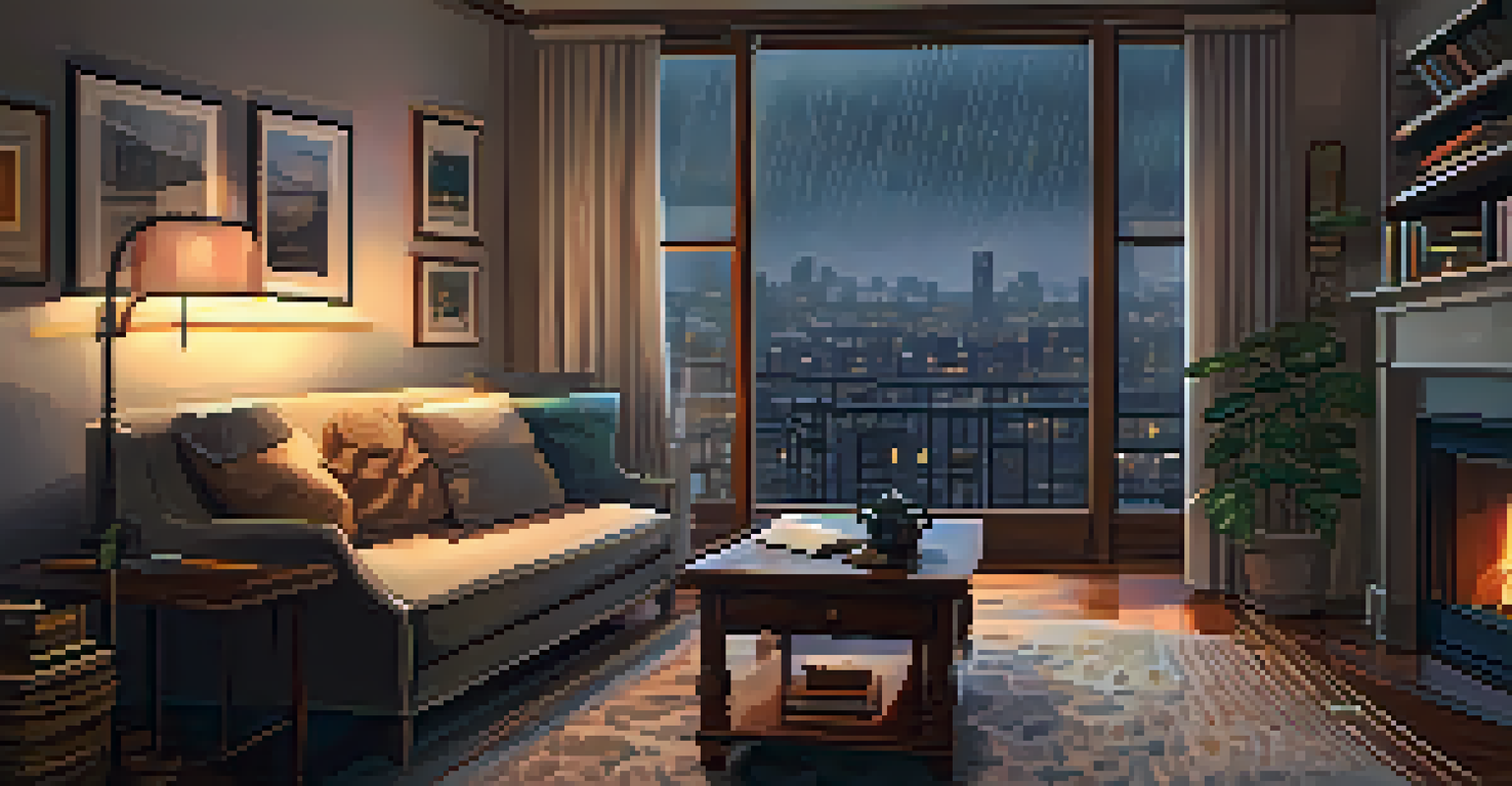Exploring Soundscapes: Incorporating Ambient Elements

Understanding Soundscapes: What Are They?
Soundscapes are the auditory environment that surrounds us, comprised of all the sounds we hear. They can be natural, like the rustling of leaves or the sound of flowing water, or man-made, such as city traffic or distant conversations. By understanding soundscapes, we can appreciate how they influence our emotions and perceptions.
Music is the shorthand of emotion.
The concept of soundscapes is particularly relevant in music, where ambient sounds can create a rich backdrop, enhancing the overall experience. Think of it like a painting; the primary subject is crucial, but the background can add depth and context. In music, this backdrop often consists of layers of sound that evoke feelings and memories.
Incorporating soundscapes into music helps create a more immersive experience for the listener. When you listen to a track that includes sounds like birds chirping or rain falling, you’re not just hearing music; you’re transported to a different place, making the experience more meaningful.
The Role of Ambient Elements in Music
Ambient elements serve as a bridge, connecting the listener to the emotional core of a piece. These elements can be anything from soft synth pads to field recordings of nature. By integrating these sounds, musicians can evoke specific feelings or set a particular mood.

For example, consider a track that begins with the gentle sound of waves lapping at the shore. This sound can instantly transport the listener to a calm beach, creating a serene atmosphere long before the music begins. It’s like a warm invitation into the artist's world.
Understanding Soundscapes
Soundscapes encompass all the sounds in our environment, both natural and man-made, influencing our emotions and perceptions.
Moreover, ambient elements can also enhance the storytelling aspect of music. When used wisely, they can underline lyrics or musical themes, making the entire piece more cohesive and engaging. This is why many artists today experiment with soundscapes to enrich their compositions.
Creating Your Own Soundscape: Tips and Techniques
If you're interested in creating your own soundscapes, start by gathering sounds that resonate with you. This could be recordings from your surroundings, nature sounds, or even digital sound libraries. The key is to choose sounds that evoke the emotions you want to convey.
Sound is the vocabulary of nature.
Next, consider layering your sounds. Just like a chef combines different ingredients to create a delicious dish, layering various sounds can add complexity and richness to your soundscape. For instance, you might blend soft piano melodies with ambient bird sounds for a peaceful effect.
Finally, don’t be afraid to experiment with effects and dynamics. Adding reverb or delay can create a sense of space, while adjusting the volume of different elements can help highlight important aspects of your soundscape. Remember, the journey of creating soundscapes is as much about exploration as it is about the final product.
The Emotional Impact of Ambient Soundscapes
Ambient soundscapes can evoke a wide range of emotions, from tranquility to nostalgia. This emotional connection is crucial in music, as it helps listeners engage on a deeper level. For instance, a soundscape featuring distant thunder can create a sense of foreboding, while gentle rain sounds can evoke peace.
One interesting aspect of soundscapes is their ability to trigger memories. A certain sound might remind you of a childhood summer spent by the lake or a rainy afternoon with a good book. This personal connection makes soundscapes a powerful tool for artists looking to resonate with their audience.
Emotional Power of Soundscapes
Ambient soundscapes can evoke a wide range of emotions and trigger memories, enhancing the overall music experience.
Ultimately, the emotional impact of soundscapes lies in their ability to transform the listening experience. They can enhance the narrative of a song, making it not just something you hear, but something you feel and remember.
Examples of Artists Who Master Soundscapes
Many contemporary artists have mastered the art of incorporating soundscapes into their music. Take Brian Eno, for example, who is often credited with pioneering ambient music. His works are rich with layers of sounds that transport listeners to different realms, effectively blurring the lines between music and environment.
Another notable example is Sigur Rós, a band known for their ethereal soundscapes that blend natural sounds with haunting melodies. Their music often feels like a journey, inviting listeners to immerse themselves in their unique auditory world.
These artists showcase how soundscapes can elevate music from mere sound to a profound experience. By studying their techniques, aspiring musicians can learn to weave ambient elements into their own compositions, creating a richer listening experience.
The Future of Soundscapes in Music
As technology continues to evolve, the potential for incorporating soundscapes into music is limitless. With advancements in sound design and recording techniques, artists now have access to an array of tools to create complex sound environments. This evolution opens doors for more immersive and experimental music.
Moreover, the rise of virtual reality and augmented reality experiences allows for even more innovative approaches to soundscapes. Imagine stepping into a virtual world where you can manipulate sound elements in real-time, creating a personalized auditory experience. The future of music is not just about what you hear, but how you interact with sound.
Future of Soundscapes in Music
Advancements in technology and immersive experiences are expanding the potential for soundscapes in music, encouraging innovative artistic exploration.
As we move forward, the integration of soundscapes will likely become a staple in various genres of music, encouraging artists to push boundaries and explore new sonic territories. It’s an exciting time for musicians and listeners alike, as we embrace the depth and richness that soundscapes can bring.
How to Listen to Music with Ambient Soundscapes
Listening to music that incorporates ambient soundscapes can be a transformative experience. To fully appreciate the nuances, try to find a quiet space where you can immerse yourself without distractions. This allows you to focus on the layers of sound and the emotions they evoke.
Consider closing your eyes while listening. This simple act can heighten your awareness of the soundscape, enabling you to visualize the environment the artist has created. You might find yourself imagining a serene forest or a bustling city, depending on the sounds present in the music.

Finally, take a moment to reflect on how the music makes you feel. What memories or emotions does it trigger? Engaging with music in this way can deepen your appreciation for the art and the skill that goes into crafting such immersive soundscapes.